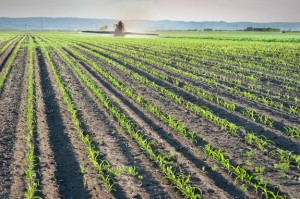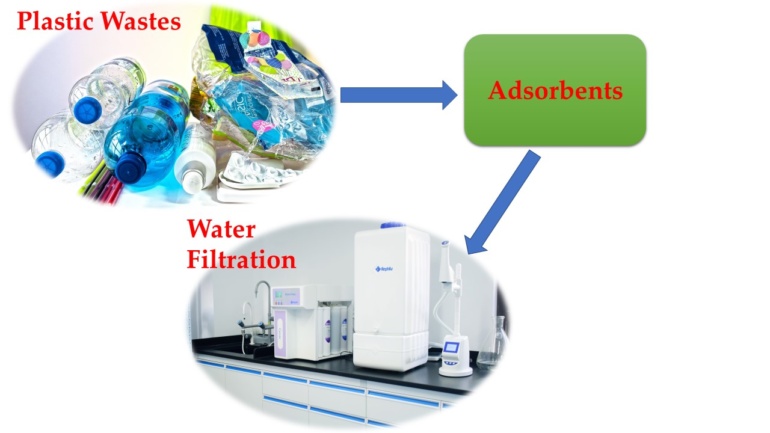By Nick Law, Staff Writer and Editor for Save The Water™ | September 16, 2015
On July 16, 2015, the government of Alberta issued an emergency alert to the residents of Vulcan County. The alert warned that urea ammonium nitrate (UAN) had been accidentally spilled onto nearby private land.1 The warning advised the residents not to use the water in the Little Bow River for “cooking or bathing.” Boiling will not change the prohibition. The Little Bow River flows into the Traverse Reservoir. Fortunately, Alberta Environment workers swiftly detected and contained the spill.2 After testing water samples from the Little Bow River and the Travers Reservoir, Alberta Environment workers released a statement on July 19, 2015. They claimed that the spill did not present a risk to human health. As a consequence, the Alberta government lifted the advisory regarding the possible water contamination.3
Agriculture and Fertilizers Contaminate Water with UAN Urea Ammonium Nitrate
If greater quantities of UAN had been spilled, and if the reaction from the government had not been so prompt, circumstances could have been much more dire for Alberta. For example, in 2010, Fujun Yue and a team of researchers published a study of nitrate levels in several water bodies located in Tianjin, China. They collected seventy-two water samples “from rivers, reservoirs, sewage water with bad smell odors and color during sampling, salinized water and other sites.”4 The researchers found that many of their samples contained concentrations of ammonium nitrate higher than the limit for drinking water. The World Health Organization (WHO) established this standard.
Yue and his team attributed their findings to the ubiquitous use of nitrogen fertilizers in the large scale of agricultural crops. As a result, the team stated that high amounts of nitrates leached into the soil and groundwater.4 There had been no significant fertilizer spills in the region. Unlike the Alberta spill, prevalence of nitrogen-based fertilizer over a long time caused contamination.
Exposure to UAN Causes Health Problems
For instance, the incident in Alberta involved spilling UAN. UAN is a solution of urea and ammonium nitrate in water that is commonly used as liquid fertilizer on an industrial scale. Therefore, UAN cannot be handled safely without appropriate protective gear such as gloves, thick clothing, and eye protection because it can cause eye and skin irritation upon contact.
Additionally, ingesting UAN can cause methemoglobinemia.5 Methemoglobinemia is a condition in which an individual’s bloodstream contains too much methemoglobin, “a form of hemoglobin that is useless for carrying oxygen and delivering it to tissues throughout the body.”6 As a consequence, the affected individual will experience cyanosis and other symptoms relating to oxygen deprivation that may potentially result in death.5
Also, the presence of ammonium nitrate in a water body can cause high levels of NO3– to accumulate because of nitrification. In addition, it can cause long-term consumption of water contaminated by large amounts of NO3–. This “can induce cancer in a variety of organs, including the stomach, colon, bladder, lymphatics, and hematopoietic system.”4
More than eighty percent of the Earth’s atmosphere is composed of nitrogen, and many naturally-occurring chemical reactions form nitrates.7 But an excessive amount of nitrates in water bodies can result in severe environmental consequences.
As a fertilizer, UAN promotes plant growth. Consequently, if UAN enters a water body in sufficient quantities, it will cause eutrophication – a high concentration of plant nutrients in water. Eutrophication induces algae and other nitrate-consuming plants to grow and decay rapidly. Meanwhile, significant amounts of organic material form, and thereby remove the water body’s oxygen content. This phenomenon is known as anoxia. When it occurs in a water body, fish, invertebrates, and shellfish die from asphyxiation.8
UAN is Difficult and Expensive to Remove from Water
According to Fleseriu and Oroian, nitrates dissolve easily in water but persist. Namely, the current removal methods of removing or eliminating nitrates in water are demineralization by distillation or reverse osmosis, ion exchange, and mixing. In conclusion, all three processes are complicated and expensive to perform, especially for purifying water contaminated by nitrates.9
Nevertheless, nitrate fertilizers will continue to be used due to their effectiveness, relative cheapness, and the world’s vast demand for agricultural produce. With efforts to decrease cases such as the nitrate-based fertilizer issue, Save the WaterTM (STWTM) works to raise water contamination awareness and advocates for life-changing water technologies. Your aid will bring STWTM one step closer toward ensuring access to safe and clean water for the world.
References
- CBC News. July 16, 2015. “Vulcan County told to ‘exercise caution’ after Little Bow River fertilizer spill.” http://bit.ly/2Epzv0T
- Sammy Hudes. July 17, 2015. “Authorities probe accidental fertilizer release near Little Bow River.” Calgary Herald. http://bit.ly/2Gx5EEv
- Emma Mcintosh. July 19, 2015. “No health risk from Little Bow River fertilizer spill, authorities say.” Calgary Herald. http://bit.ly/2GwB51n
- Fujun Yue et al. 2010. “Using Nitrogen Isotopic Approach to Identify Nitrate Sources in Waters of Tianjin, China.” Bulletin of Environmental Contamination and Toxicology, 85. https://link.springer.com/article/10.1007/s00128-010-0156-0
- CFIndustries. September 1, 2015. Urea Ammonium Nitrate Solution_28%, 30%, 32% N (UAN): Safety Data Sheet. http://bit.ly/2ntJjyz
- MedicineNet. “Definition of Methemoglobinemia.” https://www.medicinenet.com/script/main/art.asp?articlekey=15735
- Nicole Gordon. March 2015. “Nitrogen in the Earth System.” University Corporation for Atmospheric Research. University Corporation for Atmospheric Research. https://www2.ucar.edu/news/backgrounders/nitrogen-earth-system
- “Nitrates and Their Effect on Water Quality — A Quick Study.” 2015. Wheatley River Improvement Group. Wheatley River Improvement Group (WRIG). http://www.wheatleyriver.ca/media/nitrates-and-their-effect-on-water-quality-a-quick-study/
- A. Fleseriu and I. Oroian. August 8, 2015. “Water Pollution with Nitrates from Agricultural Sources.” ProEnvironment Promediu 3.5 Jun. 2010: 110-112. EBSCOhost. Web. http://journals.usamvcluj.ro/index.php/promediu/article/view/4846/4500




